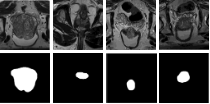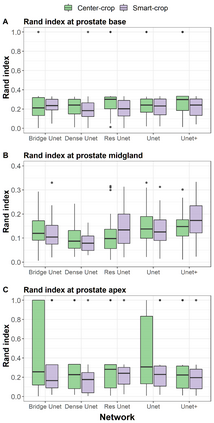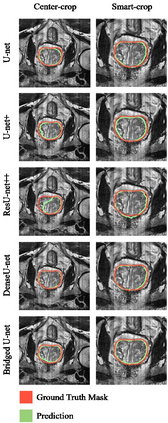Prostate segmentation from magnetic resonance imaging (MRI) is a challenging task. In recent years, several network architectures have been proposed to automate this process and alleviate the burden of manual annotation. Although the performance of these models has achieved promising results, there is still room for improvement before these models can be used safely and effectively in clinical practice. One of the major challenges in prostate MR image segmentation is the presence of class imbalance in the image labels where the background pixels dominate over the prostate. In the present work we propose a DL-based pipeline for cropping the region around the prostate from MRI images to produce a more balanced distribution of the foreground pixels (prostate) and the background pixels and improve segmentation accuracy. The effect of DL-cropping for improving the segmentation performance compared to standard center-cropping is assessed using five popular DL networks for prostate segmentation, namely U-net, U-net+, Res Unet++, Bridge U-net and Dense U-net. The proposed smart-cropping outperformed the standard center cropping in terms of segmentation accuracy for all the evaluated prostate segmentation networks. In terms of Dice score, the highest improvement was achieved for the U-net+ and ResU-net++ architectures corresponding to 8.9% and 8%, respectively.
翻译:磁共振成像(MRI)的推进分解是一项艰巨的任务。近年来,一些网络结构已经提出,旨在将这一过程自动化并减轻人工批注的负担。虽然这些模型的性能已经取得了令人乐观的成果,但在这些模型能够安全有效地用于临床实践方面仍有改进的余地。前列腺磁共振成像(MRI)的图像分解方面的主要挑战之一是,在前列腺以背景像素为主的图像标签中存在阶级不平衡。在目前的工作中,我们提议建立一个基于DL的管道,用于将原列腺周围的区域从MRI图像中植入DL,以产生更均衡地分配地表层像素(Prostate)和背景像素以及提高分解精度。DL为改进分解性功能与标准中心抽查相比,其效果是使用五种流行的成像分解成像网络,即U-net、Unet+、Res Unet+、Bridge U-net 和Dense U-net Net。拟议的智能筛选超越了前列核中心点分布中心,分别将U-9的成正段网络的中央结构条件提高到了最高分化为8+ 和正位图。对正成的精确度,用于所有评价。











